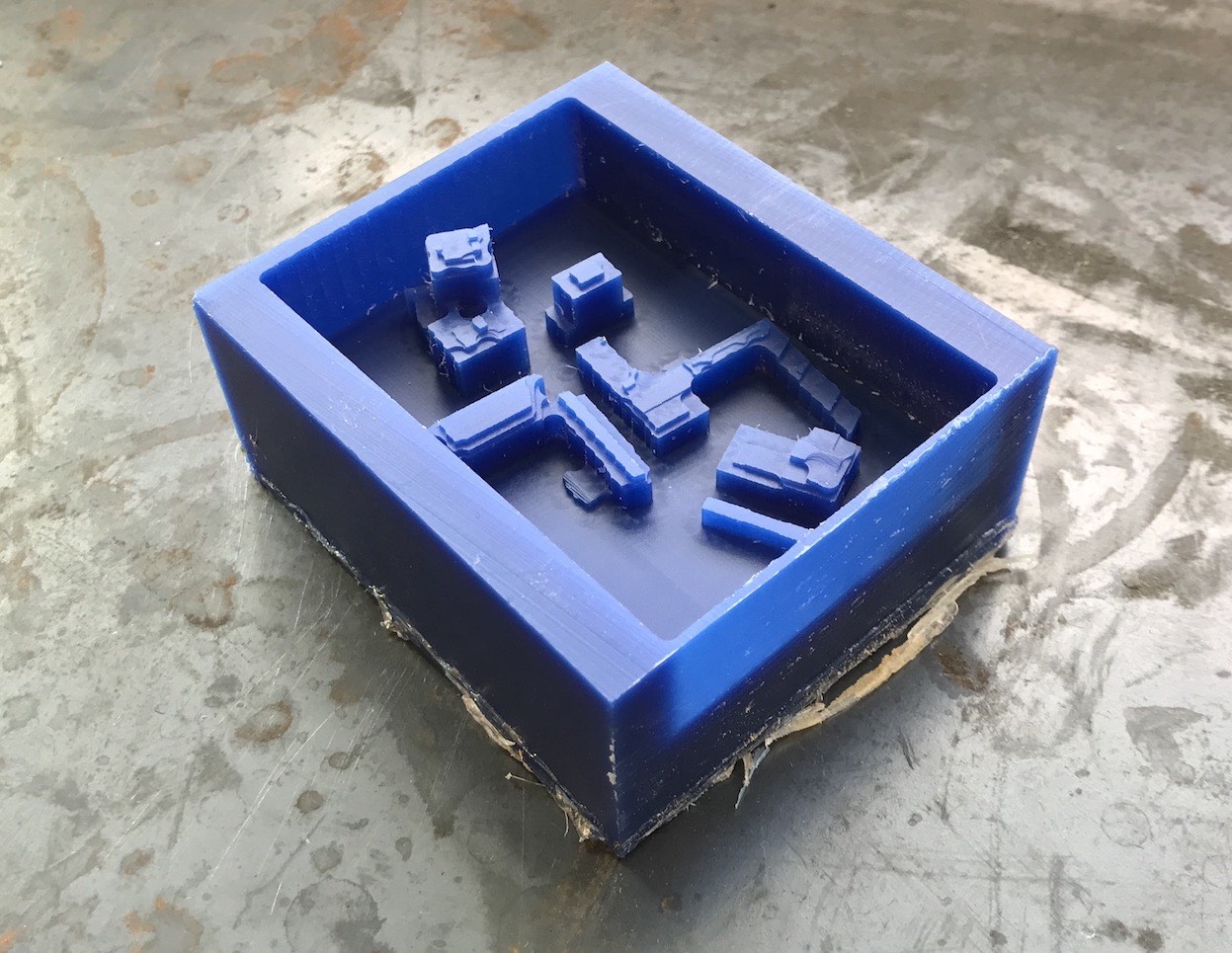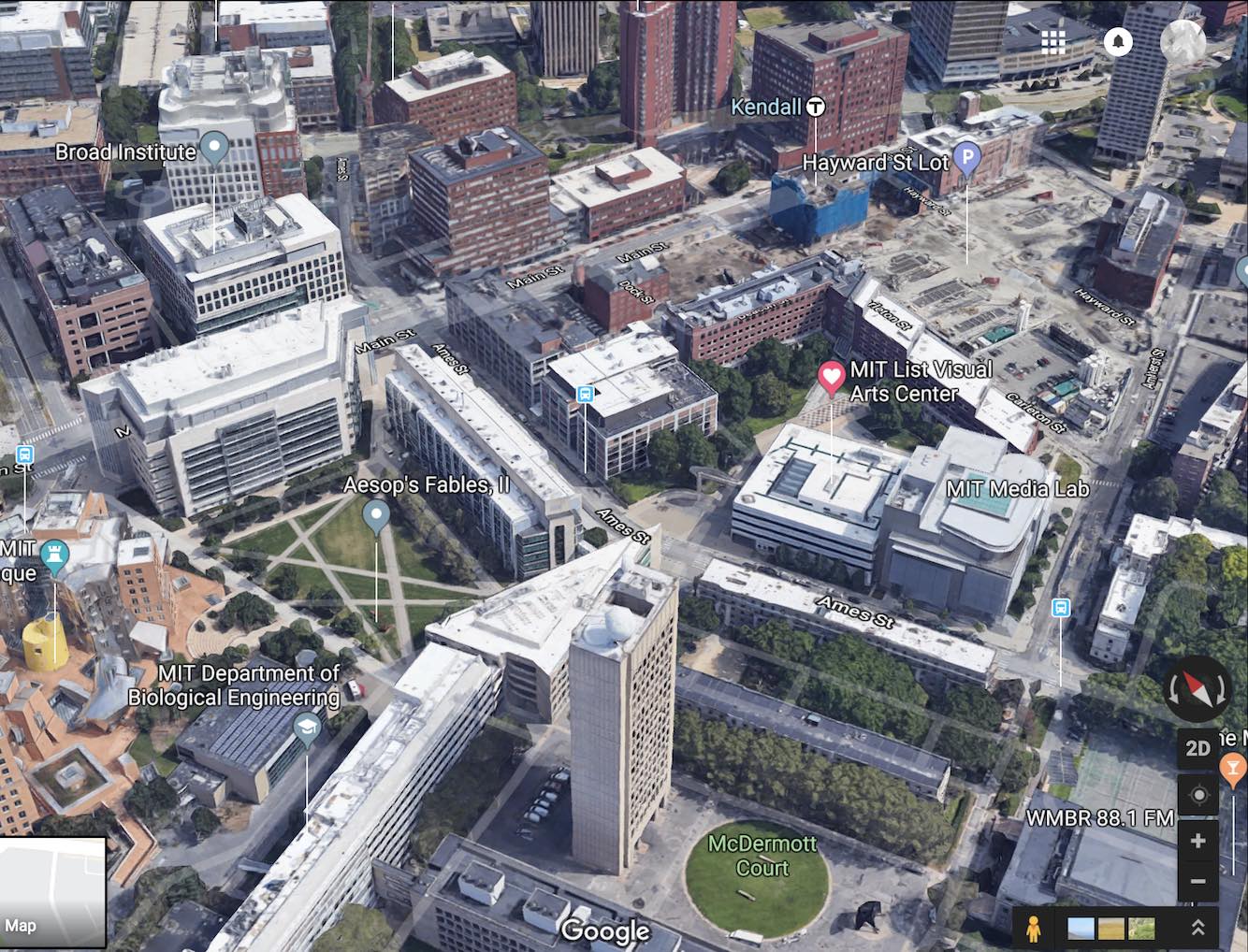Week 7
Casting
This week we were focusing on casting. I was interested by the prospect of using the CNC router in a casting process, and decided to keep it relatively simple and do a mould with one side. In my art work I have been thinking about processes of orientation and mapping, and I value my own orientation in new places. I have been collecting a few images (shown on the right ) of the developments in Kendall Square area which I pass on my way to school from my apartment each day and decided to make a reproduction of the buildings along the path from my apartment to the Media Lab. I found that the city of Cambridge, as well as Boston provide free 3D Maps of the city, and download the section which covered the area I was interested in.



Preparing the Model
I ran into many issues in preparing the mesh that came from the government website. It seemed to have a lot of open edges and other issues which Rhino was having a hart time making sense of when I tried to cut down the area of the map which I was working with. I decided to see if I could model the whole area and worked with Tom to see what it would look like with the smallest endmill. After we simulated the traces it seemed that the features were still be too small for the block I was working with ( which makes sense). I decided to scale up and focus on some of the buildings and arrangement of passages around the Media Lab towards Main Street. With Tom’s help, I managed to break up the mesh and delete the rest of the model.




Milling, Silicone Casting and Metal Casting
The milling process is quite amazing, I am excited to continue working with the CNC machines after seeing what was possible working directly from a three dimensional model. No issues came up in this part of the process as I had help and it is mostly similar to working with the larger ShopBot. For future reference, be careful removing the wax block from the base.
I cast the Oomoo 25 two part mould into the wax block after reading the instructions, following the safety protocols and removing the air with the help of Graham. This was a simple process and the mould came out easily when I returned after a few hours.
With the help of Sara I was able to cast with the low temperature Bismuth-Tin Alloy. This process was surprisingly straightforward – heat the metal in a special container to about 400 degree Fahrenheit until liquid and shiny, and pour, with proper protections and ventilation into the mould. We found that the Silicone had a listed flash point around the same temperature, so we were likely working just below this and didn’t run into any issues.







